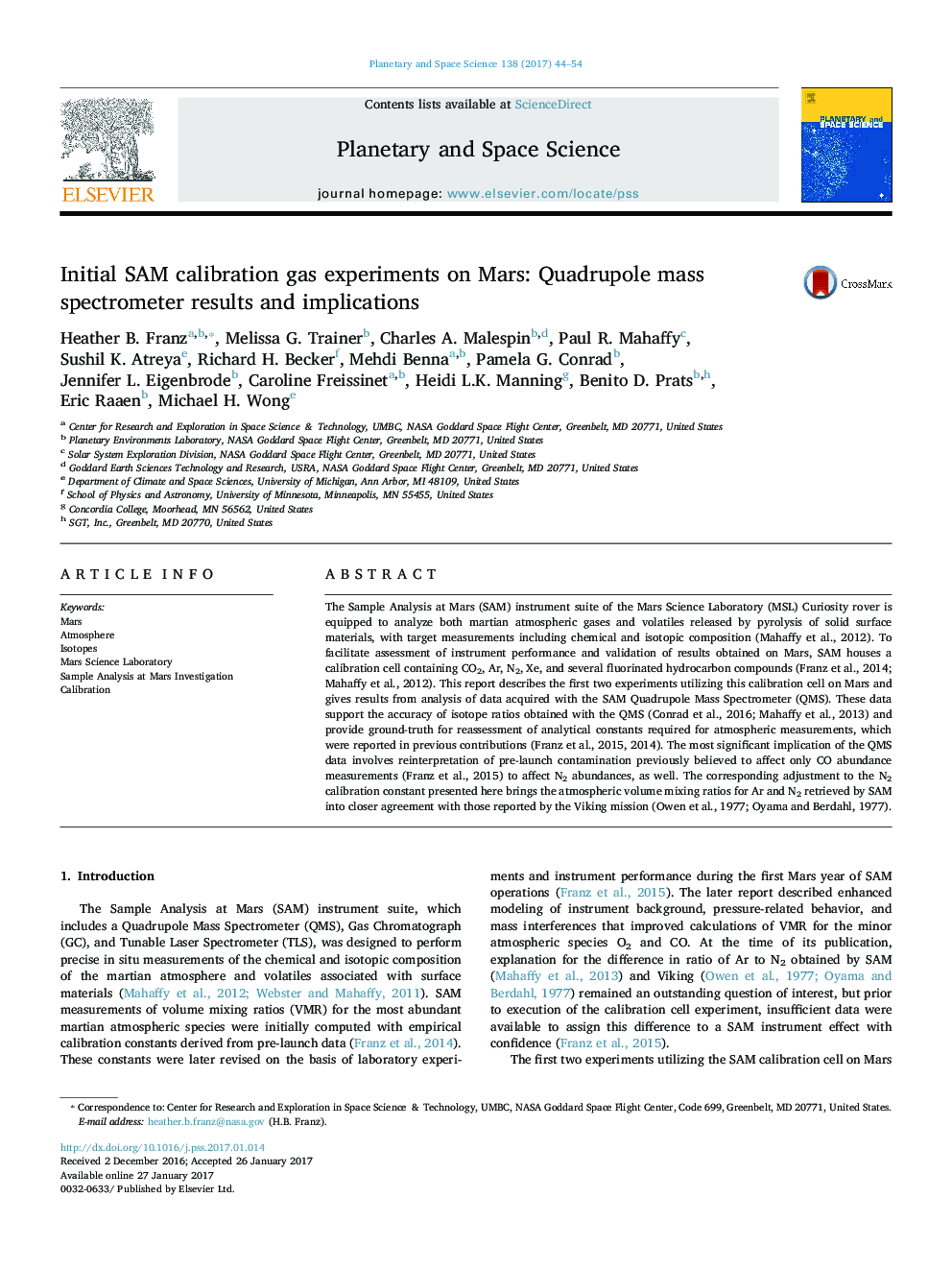| Article ID | Journal | Published Year | Pages | File Type |
|---|---|---|---|---|
| 5488116 | Planetary and Space Science | 2017 | 11 Pages |
Abstract
The Sample Analysis at Mars (SAM) instrument suite of the Mars Science Laboratory (MSL) Curiosity rover is equipped to analyze both martian atmospheric gases and volatiles released by pyrolysis of solid surface materials, with target measurements including chemical and isotopic composition (Mahaffy et al., 2012). To facilitate assessment of instrument performance and validation of results obtained on Mars, SAM houses a calibration cell containing CO2, Ar, N2, Xe, and several fluorinated hydrocarbon compounds (Franz et al., 2014; Mahaffy et al., 2012). This report describes the first two experiments utilizing this calibration cell on Mars and gives results from analysis of data acquired with the SAM Quadrupole Mass Spectrometer (QMS). These data support the accuracy of isotope ratios obtained with the QMS (Conrad et al., 2016; Mahaffy et al., 2013) and provide ground-truth for reassessment of analytical constants required for atmospheric measurements, which were reported in previous contributions (Franz et al., 2015, 2014). The most significant implication of the QMS data involves reinterpretation of pre-launch contamination previously believed to affect only CO abundance measurements (Franz et al., 2015) to affect N2 abundances, as well. The corresponding adjustment to the N2 calibration constant presented here brings the atmospheric volume mixing ratios for Ar and N2 retrieved by SAM into closer agreement with those reported by the Viking mission (Owen et al., 1977; Oyama and Berdahl, 1977).
Related Topics
Physical Sciences and Engineering
Earth and Planetary Sciences
Geophysics
Authors
Heather B. Franz, Melissa G. Trainer, Charles A. Malespin, Paul R. Mahaffy, Sushil K. Atreya, Richard H. Becker, Mehdi Benna, Pamela G. Conrad, Jennifer L. Eigenbrode, Caroline Freissinet, Heidi L.K. Manning, Benito D. Prats, Eric Raaen, Michael H. Wong,
